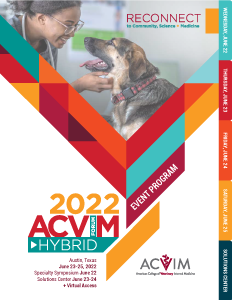To Earn CE for this Session: Watch the on-demand recording in its entirety to unlock the CE quiz. Then click here to complete the CE quiz for this session.
Scientific Session
Equine
Evaluation of Peritoneal L-lactate Concentration in the Early Post-partum Period

Giulia Rapezzano, DVM, CertAVP
ECEIM Resident
University of Nottingham, Pool House Equine Clinic
Fradley, England, United Kingdom
Primary Presenter(s)
Evaluation of peritoneal fluid L-lactate concentration (PFLC) is an important diagnostic tool when examining horses with acute abdominal discomfort. In the literature, data are lacking on normal PFLC in mares in the immediate post-partum period, which may increase uncertainty around decision making with colic cases in these patients.
The objective of the study was to compare blood L-lactate concentration (BLC) and PFLC in a population of mares in the early postpartum period.
Clinically healthy post-parturient mares from which BLC and PFLC were measured as part of a practice’s standard monitoring scheme were enrolled in the study. Mares were followed-up in the first week post-partum. Blood and peritoneal fluid samples were collected within 36 hours from parturition. Differences between paired BLC and PFLC were formally investigated using Wilcoxon-signed rank test (significance set at p<0.05).
32 mares met the inclusion criteria. None of the mares showed signs of abdominal discomfort during the first week post- partum. Median BLC was 0.7mmol/L (mean: 0.7mmol/L; range: 0-2.4mmo/L). Median PFLC concentration was 1.1mmol/L (mean: 1.2mmol/L; range: 0-3.2mmo/L). There was a statistically significant difference between BLC and PFLC (p<0.001). In 28/32 mares PFLC was higher than BLC and in 4 mares PFLC was greater than 2mmol/L (2.2-3.2mmol/L).
While there was a statistically significant difference between blood and peritoneal fluid L-lactate concentration, this difference was minor and, in most cases, measured PFLC was within the normal range. However, in some healthy mares, PFLC exceeded the reference range.
Although slightly higher than BLC, PFLC in post-parturient mares is usually within the reference range. In some clinically normal mares PFLC may exceed the reference range, which may complicate interpretation of PFLC in cases of acute abdominal discomfort in the first 36h post-partum. Larger studies involving also mares presenting with post-partum pathology are required.

